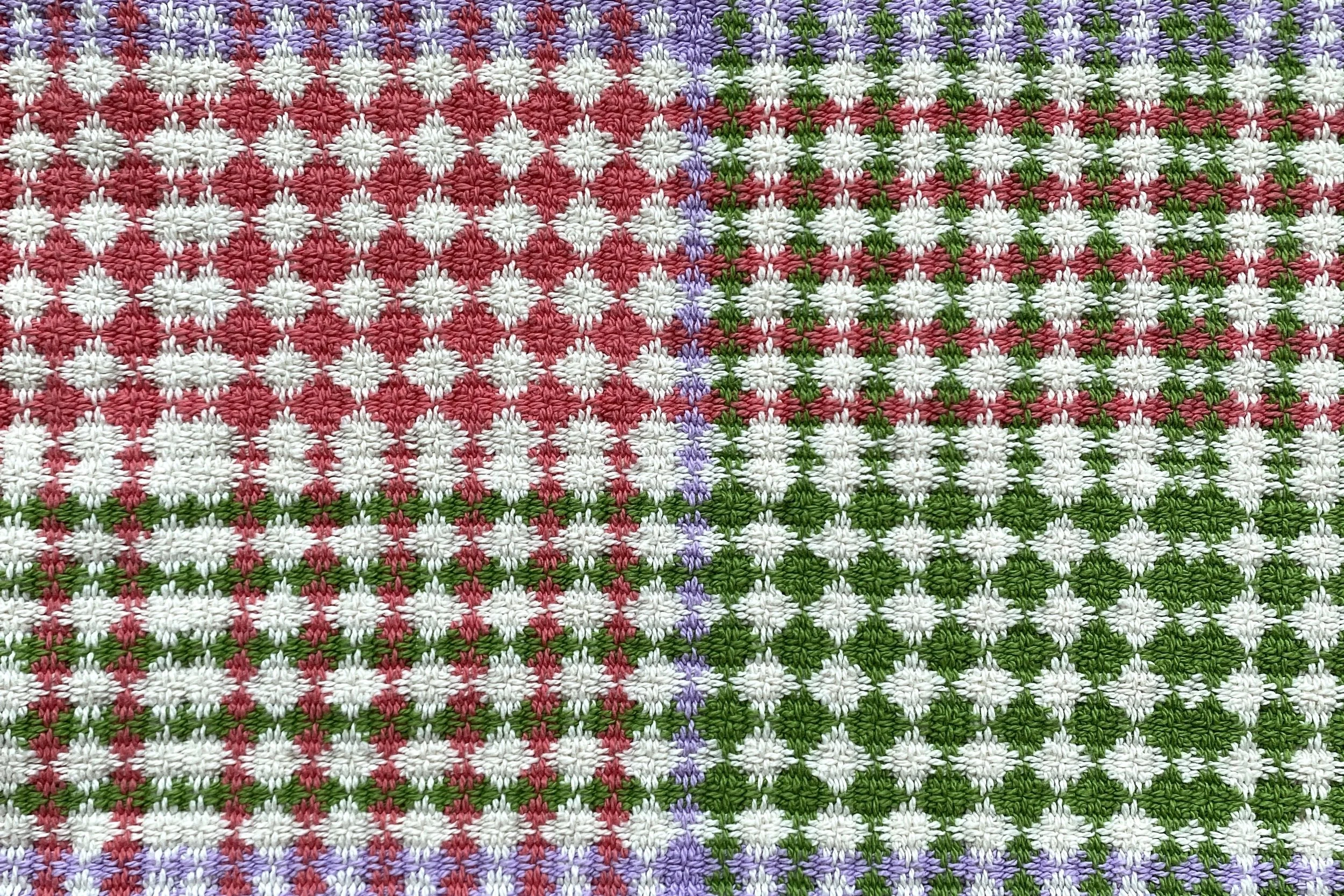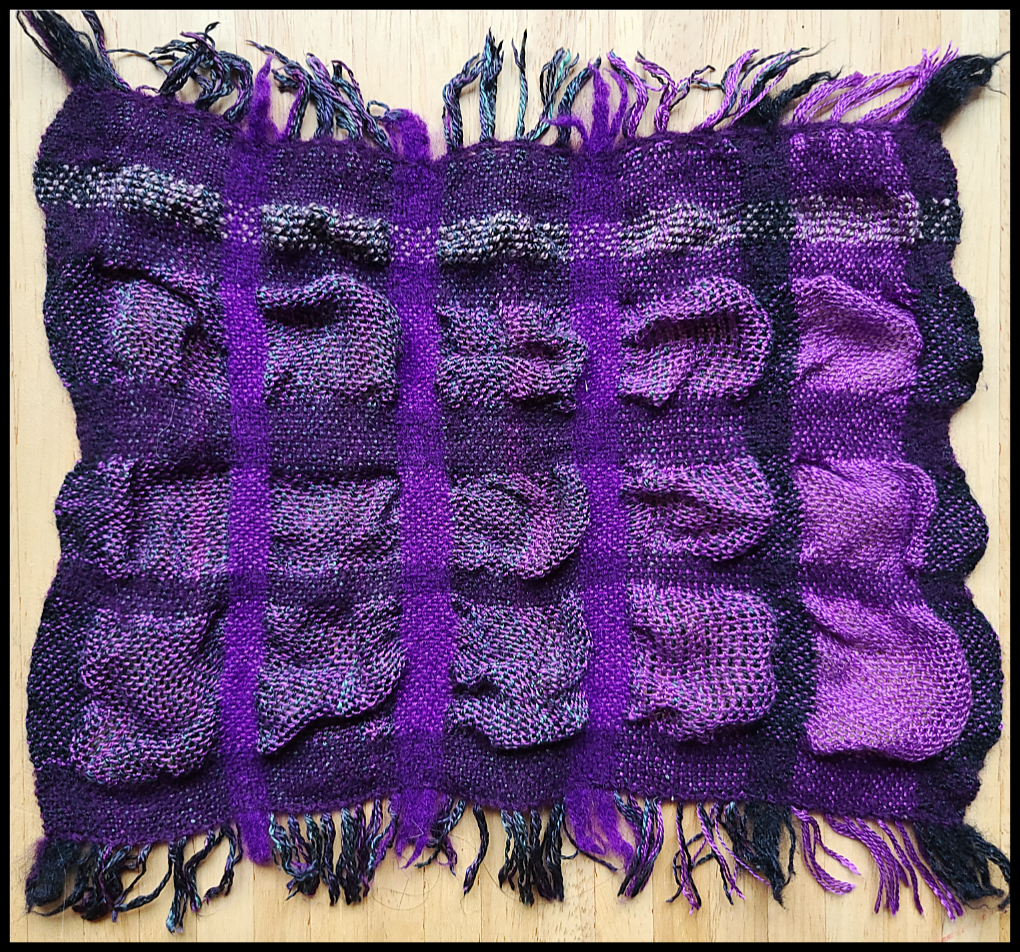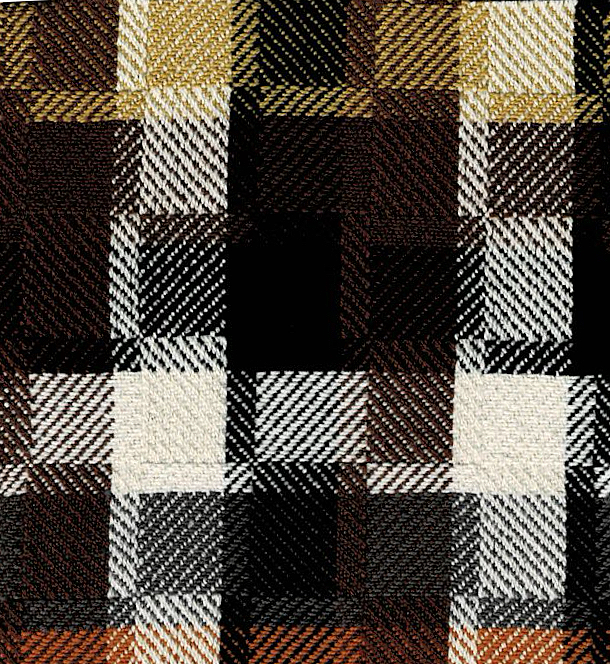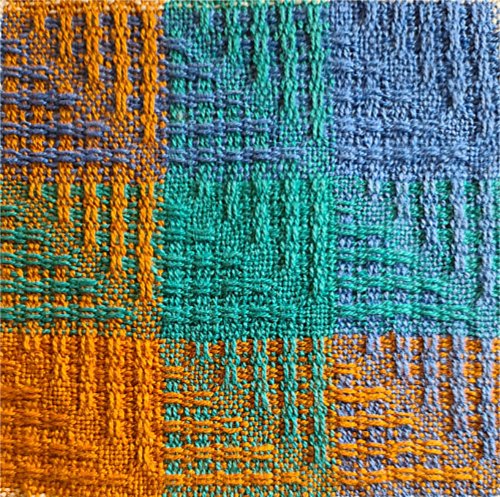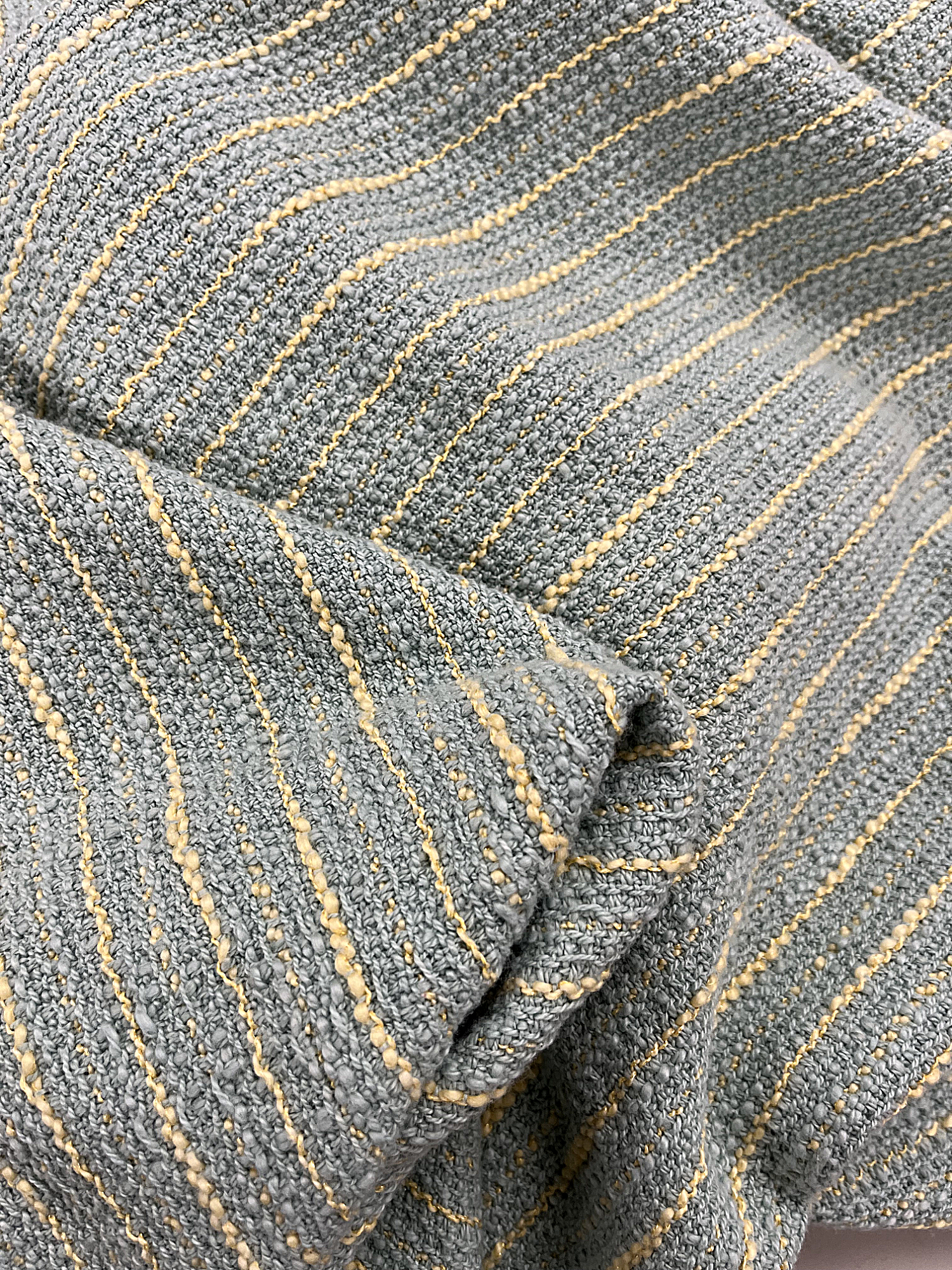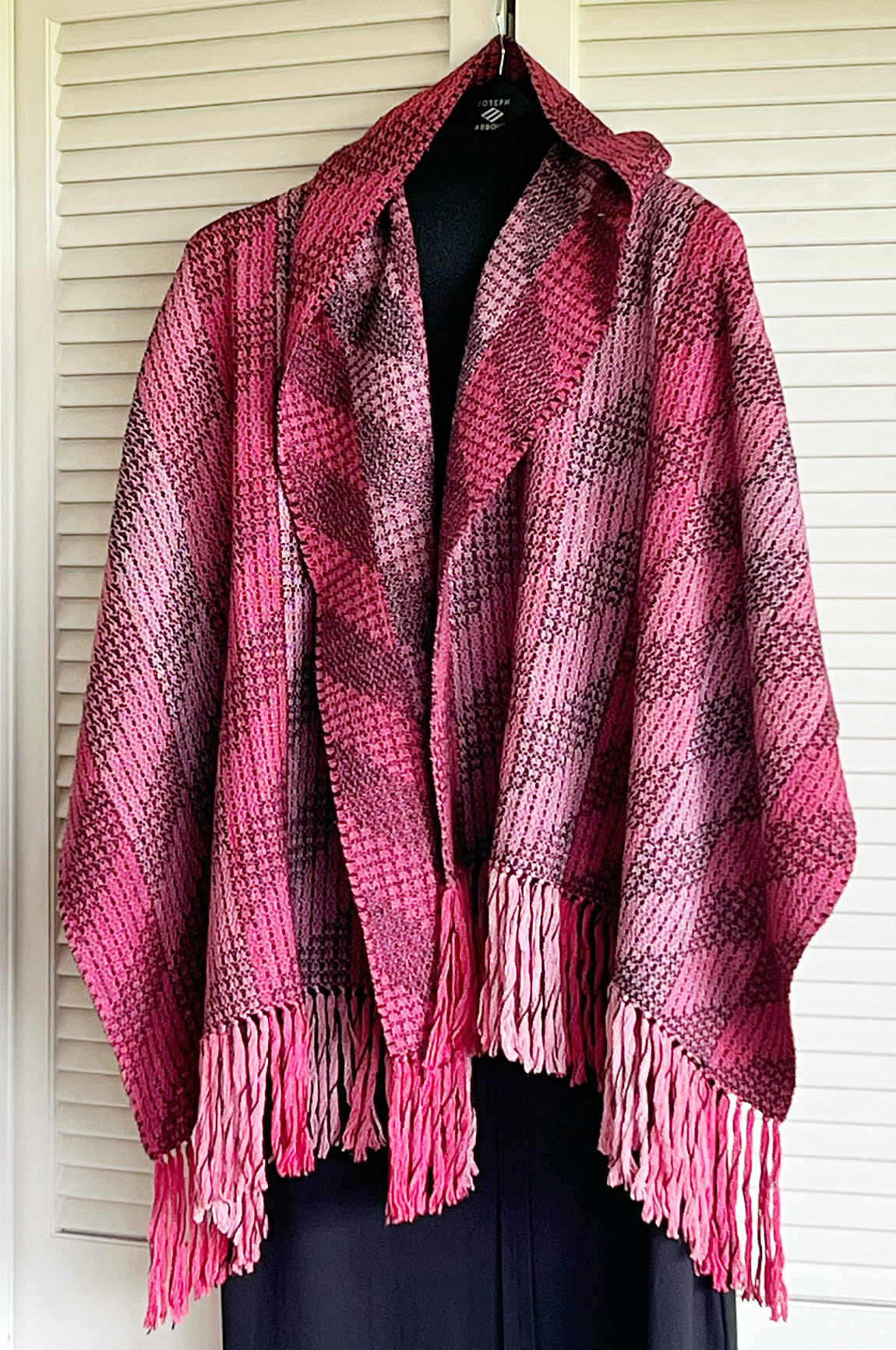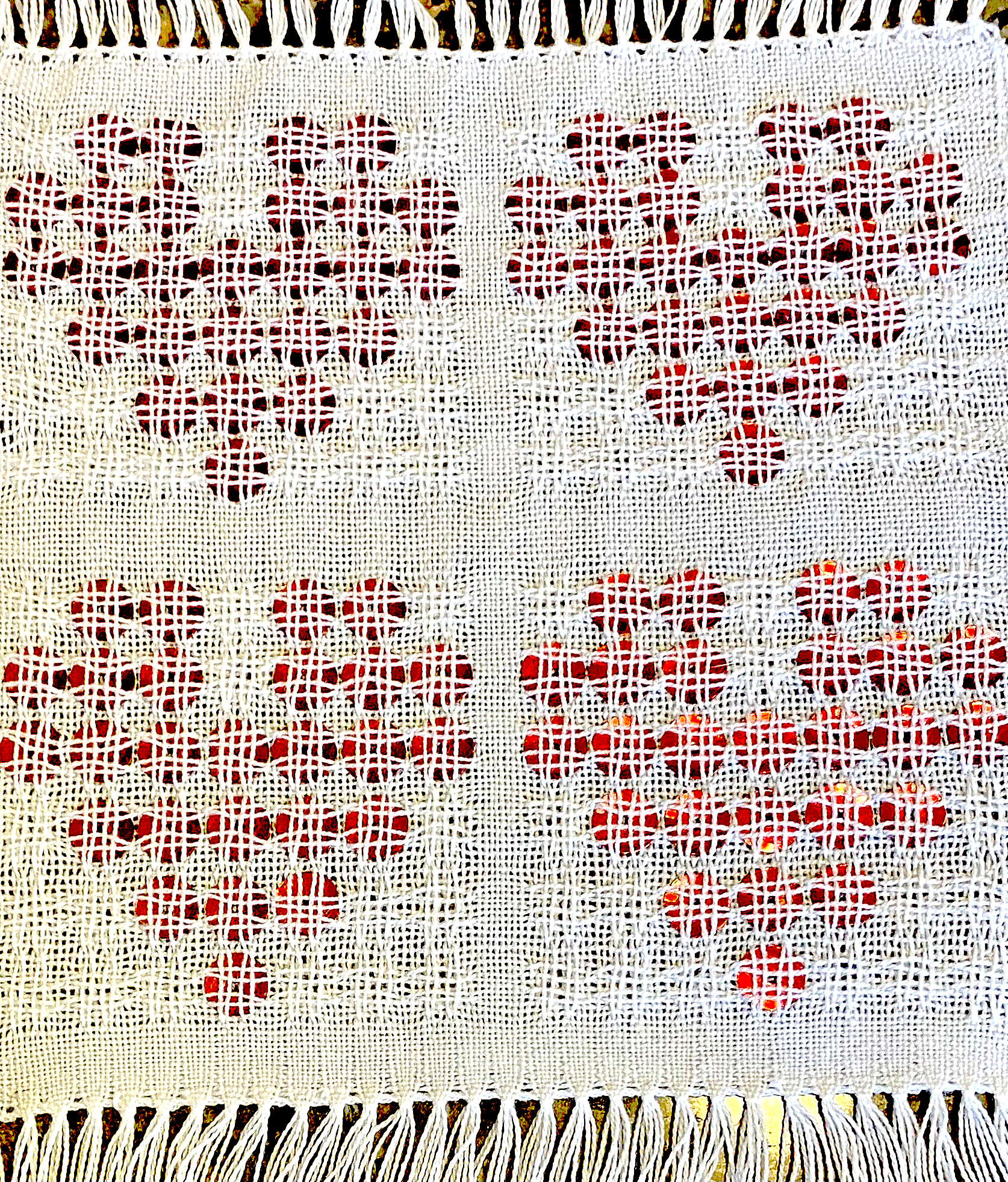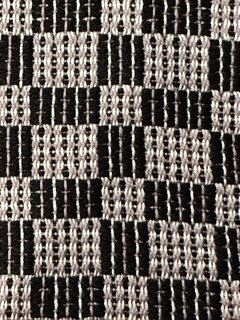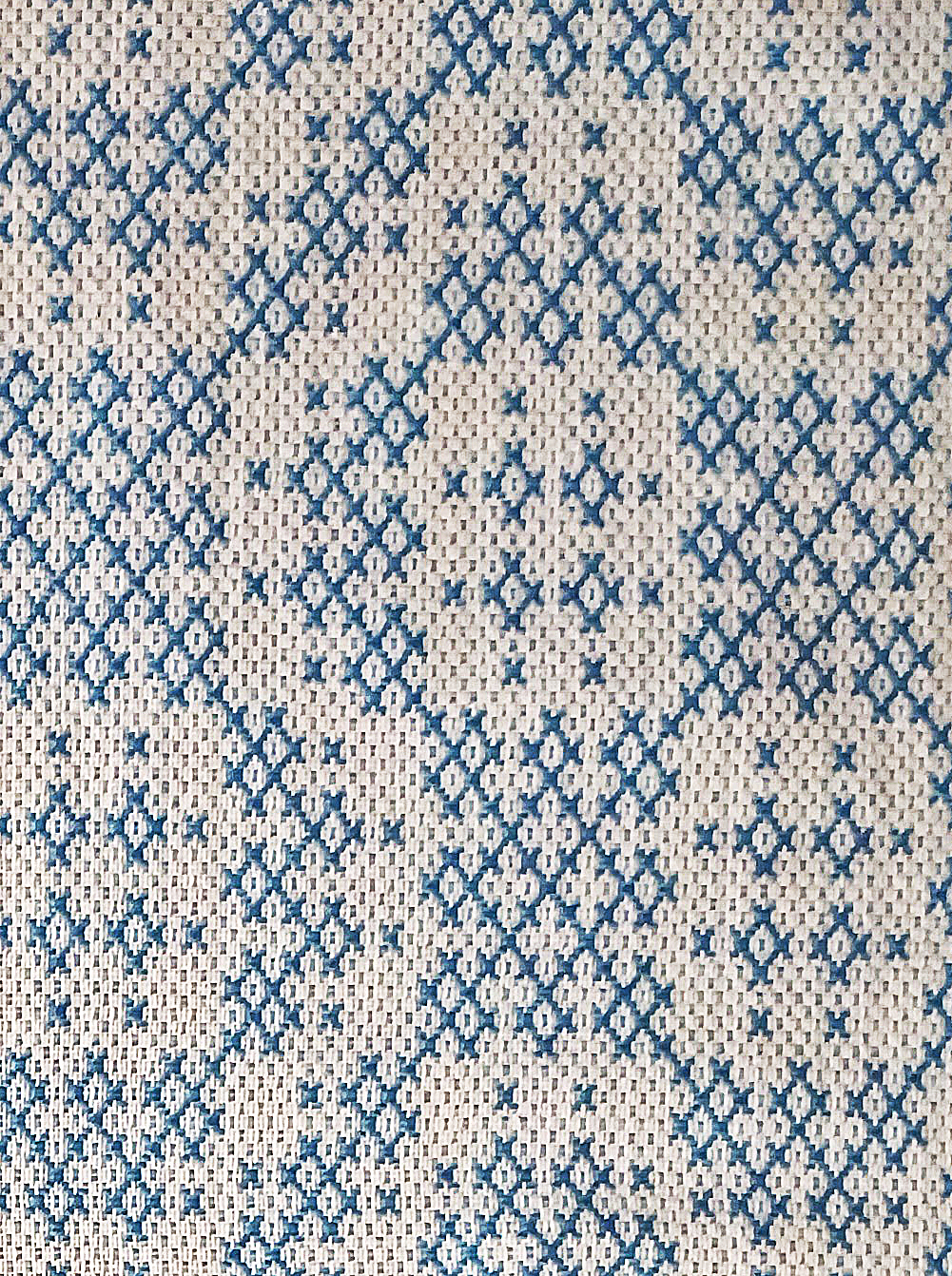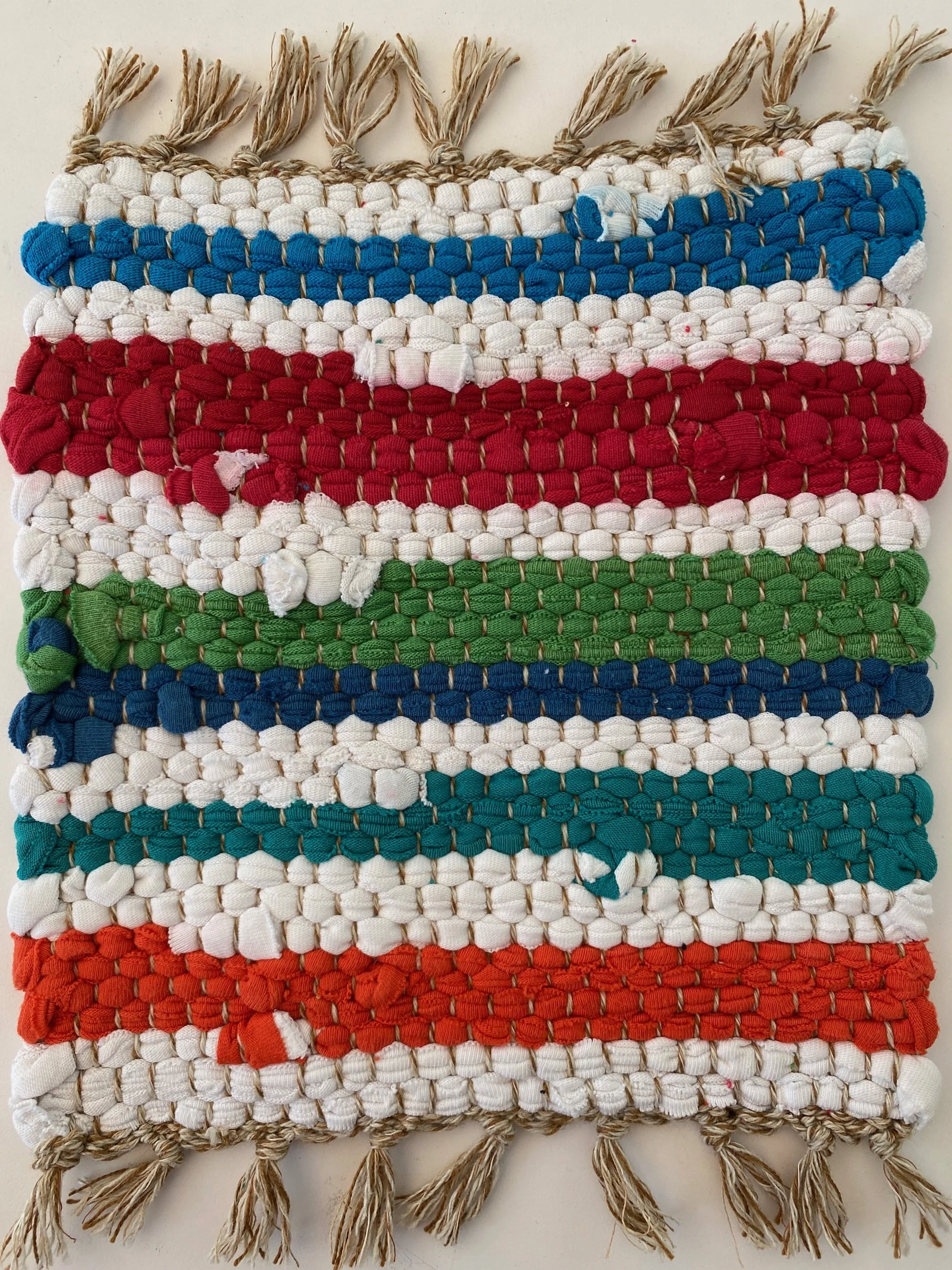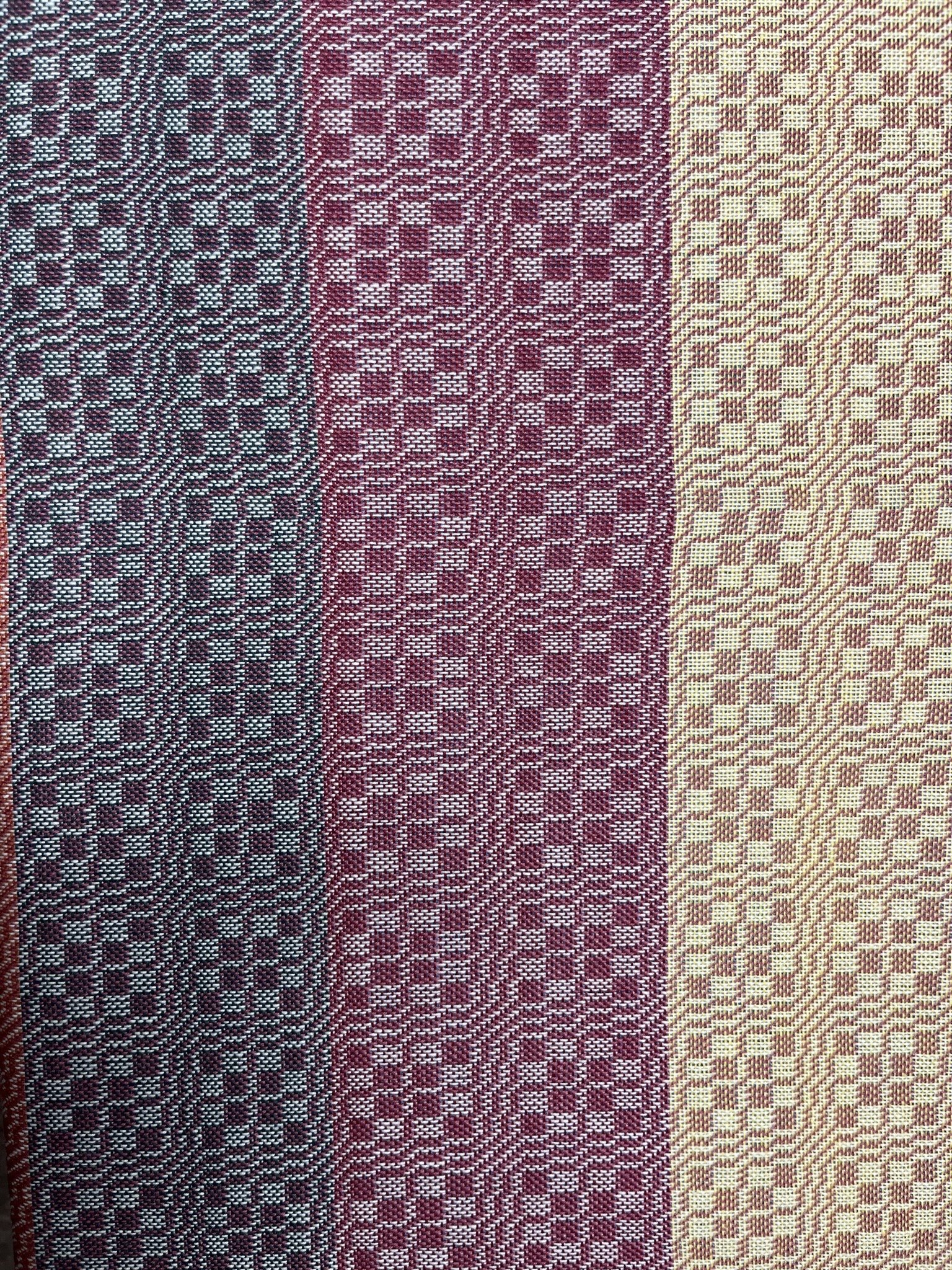Samples
Each month one (or a group) of our weavers provides a sample to share with all of our guild members. That sample will be posted here publicly the 2nd Wednesday of the month, complete with .wif or .pdf file where applicable. After that month the sample will be stored in our Members Only Archive. Please click on the photo or title to learn all the details about the sample
If you would like to weave a sample for the Guile, please follow these guidelines (links below) and submit your sample to Carol Buchmiller at bulletinsamples@seattleweaversguild.com.
Click to Open Guidelines as a PDF
Click to Download Guidelines as a MS Word Doc
This sample is #47 from A Weaver’s Book of 8-Shaft Patterns, edited by Carol Strickler. Colorado: Interweave Press, 1991 (p. 17). It is a crepe weave of the sort that are “drafted by dividing the tie-up into quadrants, designing one quadrant and then rotating or inverting or reversing it into the other three sections.” (Strickler p. 10). Diane Ferguson wove #47 for the book in white on white and recommended that it looked the best when warp and weft were identical.
Like anyone who ever tried a recipe from the Internet and then commented on the results, I did not follow instructions. I went for 8 dark X 8 light color and weave. On the loom, the color combination produces rectilinear checks much like the drawdown shown in Figure 1. With finishing, the yarns in their variable floats find new positions of rest and create a diamond effect on the fabric surface.
Erica Tiedemann
As a production yardage weaver, I’ve always been interested in variations. I started as a color/texture weaver selling mostly plain weave fabrics to home sewers. Home sewers care more about hand, color, and texture rather than woven patterns. This worked well for a couple of decades until I got a 16-shaft AVL production dobby loom. Adding patterns to color and texture became even more fun.
Linda Kubik
Collapse weave is a variation of simple plain weave with textural interest created by including stripes of feltable and non-feltable yarns in both warp and weft. After the piece is off the loom, it is fulled by hand.
Sivia Harding
These towels were so much fun to weave! I took them to Germany for hostess gifts when I went this summer, and the recipients really liked them. I found it fun to offset the color changes from the structural (threading and treadling) stripes to create extra color interlacements.
Mimi Dillman
I am always looking for ways to use up my sizable yarn stash accumulated over nearly 40 years of weaving. This weave structure ticks all the boxes for me. These swatches are cut from a long warp of dish towels destined to be given as gifts.
Colleen McKinnon
Diversified plain weave uses fine and heavy threads in both warp and weft to produce a fabric with pattern against a plain weave ground. I was looking for something different that qualified as a tied weave for my structures study group and diversified plain weave seemed to fit the bill.
Carol Buchmiller
Using up the stash! I had cones of light aqua cotton flake and one of yellow cotton flake that I wanted to find a use for. I had no idea where it came from and there was no size information on the labels. In the SWG on-line structure study group we had just talked about tricot, a simple eight shaft draft discussed by Sharon Alderman in her book, which seemed a candidate. The draft has two-end ridges that alternate either vertically or horizontally. I threaded it vertically so that the yellow ridge showed on alternate sides every fifth ridge.
Sue Willingham
The photograph on the back cover of the booklet, by Linda Tilson Davis, Bateman Weaves, The Missing Monograph (2017) grabbed my attention, and I knew exactly the yarn that I wanted to use. I assumed that I would just find the draft in the Monograph. As I read the Monograph, I began to realize that there were many Bateman Blends that fit the Summer and Winter style of the draft I was seeking.
Marg Ayres
My “full case towel series” was inspired by Sue Anne Sullivan’s modification of Robin Spady’s beer bottle pattern, #72352 from Handweaving.net.
The few towels I wove on my first attempt were received with great favor and comment. A subsequent vintage in finer yarns wove well and produced other towels. There WILL be additional vintages!
Wilma Boyd
The Seattle Weavers Guild voted to have a booth at the 2023 ANWG Convention in Bend, Oregon. The booth committee decided to decorate the booth with towels woven using namedrafts of the members’ home cities.
This sample is based on a namedraft of “Carlsborg” and its reverse, “grobslrac.” The draft is for the rosepath version (diagonals). For more details, see notes on the drawdown.
Julia Ceffalo
I have been playing around with this weave structure since I first saw it in a book lentto me by my weaving teacher in the mid-1980s. I love the way setting doubleweave at a single weave EPI gives a lacy effect over the items inserted into the pockets. I first used it to weave the “scales” on a fish made for the Tacoma Weaver’s Guild booth at the Northwest Weaver’s Conference in Boise in 1989. The same year I wove a series of evening bags using larger pockets that I stuffed with pennies and dimes. More recently I wove sequin-stuffed pockets in the shape of Christmas trees to make cards.
Colleen McKinnon
Early in my weaving career I saw a photo of a 16-shaft pattern that looked like snakeskin. Off I went on a quest to find a “snakeskin” pattern for fewer shafts. I was quite delighted to find this one in an older copy of Handwoven, thought "go big or go home,” and proceeded to weave 8 yards for the ANWG 2023 conference Noh Coat entry.
Rebecca Cushman
This was a pretty simple overshot sequence with tabby picks between pattern picks. It’s fun to play with different treadling sequences to see what kind of patterns evolve. This sample was woven with the same tie-up as the referenced pattern, but I changed the treadling counts slightly, which is reflected in the drawdown.
Skye LaChute
Profile draft "Chintz" from Weaving Designs: Miniature Overshot Patterns by Bertha Gray Hayes, expressed in Summer and Winter. I imagined towels with an oversized design – only three pattern repeats gave me the width I needed! The towels were woven as drawn in (adapted for summer and winter treadling). I used a skeleton tie-up and quickly developed a rhythm.
Tenny Canning
The weave structure is a skip herringbone with alternating groups of 12 and 10 ends. The four-color plaid is mirrored widthwise but not lengthwise. The selvedges are very interesting—at first, I thought they had been machine-stitched and trimmed to make a soft edge, but on looking closer it appears they’re secured by a few ends of plain weave with a gap between—something to try with the rest of this warp.
Carol Buchmiller
From Towelpalooza class by Janet Dawson and Sue Willingham, January 2020. Pinwheels is an 8-shaft twill with color and weave effects created by 8-end warp and weft stripes in charcoal, natural, and red.
Carol Buchmiller
T-shirt rags make durable rugs from shirts that are too shabby to go on as clothing. My first t-shirt rug, woven more than 15 years ago, is still in the bathmat rotation for my family of four. T-shirt rags also weave up quickly. Even with an energetic, weighted beat, the doubled rags fill an inch every four or five picks.
Erica Tiedemann
A four shaft overshot pattern can be converted to double weave using 4 shafts, but using 8 shafts makes the threading easier. The threading can be repeated on shafts 5 through 8 in parallel as shown on the draft; shafts 1-4 for the top layer and 5-8 for the bottom layer. The treadling is paralleled as well with the left four tie-ups weaving the top layer and the right four tie-ups weaving the bottom layer.
Vashon Weavers

